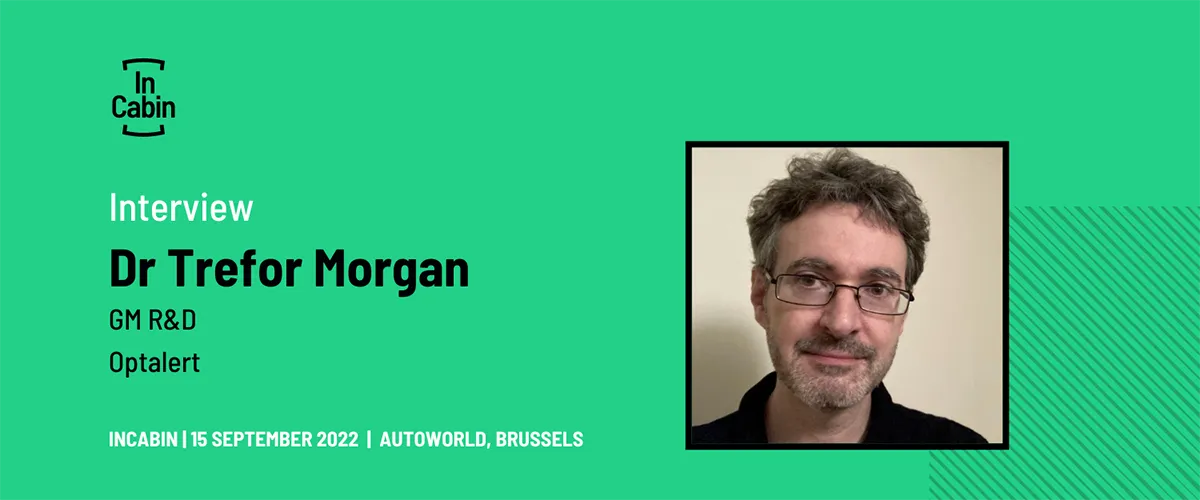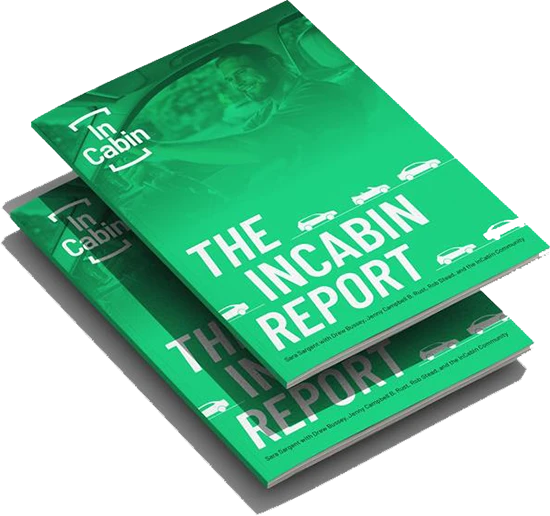
Dr Trefor Morgan, Optalert GM R&D, gave us a sneak peek on the topic of his session measuring drowsiness and what we need to know. To hear more of this topic join us in Phoenix this March for our 2nd InCabin edition.
What is something that regulators and OEMs should know about measuring drowsiness when designing requirements?
There is a biological based change that occurs in the transition from alertness to sleep in everyone. This drowsiness indicator has been proven independently in multiple sleep studies and used in commercial fleets for over 15 years.
There are two ways that drowsiness can be measured: objectively and subjectively. Objective measures are independent of the observer, meaning they are performed using something that does not require a person’s perception on how drowsy they feel or look. In a different scenario, this would be akin to measuring someone’s temperature, using a thermometer. Subjective measures are measurements that are dependent on the observer’s perception, opinion and feeling of a drowsiness condition. In the same use-case, a subjective measure would be to ask someone how hot/cold they feel.
With advancements in drowsiness research and technology, obtaining objective drowsiness measurements are no longer complicated and should be the choice of drowsiness measurements moving forward.
What are some myths about drowsiness that could lead to issues if not addressed?
- Drowsiness cannot be faked. Sleep deprivation is the only way to be truly drowsy.
- Yawning is commonly associated with drowsiness but this assumption is flawed. Yawning is not a good indicator for drowsiness. Studies have also shown that not yawning does not mean alertness. There are other reasons that may cause someone to yawn, like boredom.
- Micro-sleeps are periods of time where a person loses total awareness of their surroundings. In the European General Safety Regulations (EU GSR), this is defined as an extended period of eyelid closure. Micro-sleeps can occur even when eyes are open. This is well documented and is often referred to as the ‘death stare’. The person’s eyes are wide-open but their brain is no longer processing sensory inputs.
How does Optalert‘s technology fit into the Tier 1’s DMS?
Our input is the eyelid opening from the Driver Monitoring Systems’ (DMS) image processing, our output is the real-time drowsiness score – which is aligned with Karolinska Sleepiness Scale (KSS) as defined in EU GSR. Optalert’s drowsiness algorithm (called the Optalert SDK) is easy to integrate and we have partnered with multiple Tier 1’s to integrate the solution into a holistic DMS system. All suppliers of DMS with camera and image processing can integrate the Optalert technology today.
What other applications have been using this technology?
Optalert has been researching the driver drowsiness space since our foundation in 2002. The Optalert drowsiness detection algorithm has been used in sleep research as well as pharmaceutical investigations in the past 20 years, resulting in many publications. The solution has also been successfully used commercially in fleets for longer than 10 years by thousands of drivers, to reduce the risk associated with driver impairment due to drowsiness.
Following the recent recognition of the importance of Drowsiness by both GSR and Euro NCAP, we have partnered with multiple Tier 1’s to integrate our solution into a holistic DMS system. In addition to this we are also working on further biomarkers relevant to the drivers’ wellbeing.
Where is the technology heading in its evolution?
We have a biomarker for drowsiness and are developing biomarkers for inattentiveness, cognitive load, screening for sleep disorders, sleep apnoea, seizures, stroke, Alzheimer’s onset, Parkinson’s onset, concussion, impairment due to alcohol and drugs. We originally started by developing a biomarker for objectively measuring drowsiness. This biomarker is a unique composite metric of numerous characteristics extracted from eyelid movements of a person.
Substantive research links eyelid movements to other neurological states or conditions such as inattentiveness, sleep disorders, seizures, strokes, dementia and Alzheimer’s disease, Parkinson’s, concussion, schizophrenia, autism and so on. For instance, you can tell the level of engagement of a person in a content through eyelid parameters. In fact, blink rate has been frequently used for identifying attentiveness, in studying Parkinson’s, schizophrenia and autism. Blink rate is only one of the many characteristics that we extract from eyelid movements, and there are many more features that we compute from eyes and eyelid movements that are very useful in studying the neurological conditions mentioned above. Optalert has active clinical studies in Alzheimer’s, cognitive impairment, neurotoxicity, epilepsy, impairment due to drugs, sleep disorders and more.
Tell us more about driver state as it relates to drowsiness measurement or countermeasures?
Different countermeasures are appropriate at different stages. Accurate objective drowsiness measures provided by Optalert, enables a multi-stage approach to the application of countermeasures. Thus, enabling the driver to prolong the duration of safe driving.
Interestingly and counter-intuitively, the earlier stages of drowsiness are best countered by reducing and simplifying the driving tasks, whereas optimal countering of the later stages of drowsiness are achieved by “making driving harder”. Specifically, the Optalert algorithm is ideally suited to interface between the DMS housing drowsiness and the relevant ADAS systems – Auto Cruise Control, Lane Control, Lane Departure, Climate Control and Cabin Environment.
What should OEMs and regulators know about countering drowsiness?
OEMs should be aware that just meeting the regulations can lead to systems that will not be accepted by the market. The current regulations have put the bar very low for drowsiness detection. The current requirements for an acceptable drowsiness detection by EU regulations is to only achieve a sensitivity of 40%. This means that, of the times that drivers are drowsy, the algorithm can detect only 40% of them.
However, what is missing here is that there are no regulations on the specificity of drowsiness detection algorithms in the current regulations. Good drowsiness systems should aim for a high specificity, and not bother drivers with unnecessary warnings when the driver is not at risk. In the extreme case, a system that constantly warns the driver they are at risk would score 100% in the regulations. A system that frequently warns drivers when they are not at risk will most likely be disabled, and then not be there when they need it.
How does Optalert’s measure differ from other measures of drowsiness?
Optalert’s objective drowsiness measurement provides a precise scale of a person’s drowsiness level and its associated performance impairment. It is also pivotal when performing validation testing as it removes human subjectivity and prevents issues associated with test-retest reliability. Building on subjective measures or unsubstantiated indicators, such as yawning, will lead to false warnings and perpetuate distrust in drowsiness systems. While these issues may seem minimal in early DMS development stages, they become significant when these systems are implemented across different platforms and compounded again when assessed outside manufacturer-controlled environments. We provide a direct and objective measure of driver drowsiness. The driver drowsiness should be related to the risk of performance failure in driving.
How can Optalert help providers with their own drowsiness measurements?
Optalert can help OEMs and Tier 1’s to confirm the validity of their DMS. Our assessment and validation service uses a biologically based measure of impairment due to drowsiness, enabling quantification of every blink in eye-opening data. This helps OEMs and Tier 1’s to achieve GSR compliance quickly.

